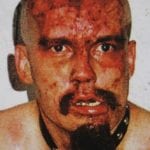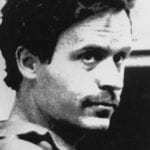 Humans
Humans  Humans
Humans  Movies and TV
Movies and TV 10 Holiday Movies Released at Odd Times of the Year
 Politics
Politics 10 Countries Where Religion and Politics Are Inseparable
 Weird Stuff
Weird Stuff 10 Freaky Times When Famous Body Parts Were Stolen
 Miscellaneous
Miscellaneous 10 Interesting Things Manufacturers Stopped Making and Why
 Gaming
Gaming 10 Funny Tutorials in Games
 History
History 10 Fascinating Little-Known Events in Mexican History
 Facts
Facts 10 Things You May Not Know about the Statue of Liberty
 Movies and TV
Movies and TV 10 Movie Adaptions That Brought Popular Songs to Life
 Health
Health 10 Miraculous Advances Toward Curing Incurable Diseases
 Humans
Humans 10 One-of-a-kind People the World Said Goodbye to in July 2024
 Movies and TV
Movies and TV 10 Holiday Movies Released at Odd Times of the Year
 Politics
Politics 10 Countries Where Religion and Politics Are Inseparable
Who's Behind Listverse?

Jamie Frater
Head Editor
Jamie founded Listverse due to an insatiable desire to share fascinating, obscure, and bizarre facts. He has been a guest speaker on numerous national radio and television stations and is a five time published author.
More About Us Weird Stuff
Weird Stuff 10 Freaky Times When Famous Body Parts Were Stolen
 Miscellaneous
Miscellaneous 10 Interesting Things Manufacturers Stopped Making and Why
 Gaming
Gaming 10 Funny Tutorials in Games
 History
History 10 Fascinating Little-Known Events in Mexican History
 Facts
Facts 10 Things You May Not Know about the Statue of Liberty
 Movies and TV
Movies and TV 10 Movie Adaptions That Brought Popular Songs to Life
 Health
Health 10 Miraculous Advances Toward Curing Incurable Diseases
Top 10 Notorious Death Squads
In 1984, George Orwell gave his readers a shocking glimpse into the mind of authoritarianism when he put these words in the mouth of state torturer O’Brien: “If you want a picture of the future, imagine a boot stamping on a human face—forever.” This image of complete state control (which Orwell lifted from Jack London’s 1908 dystopian novel The Iron Heel) has haunted readers for decades, especially considering that the history of the 20th and 21st centuries has been one of violence and terrorism. Death squads, or extralegal and paramilitary units tasked with carrying out extrajudicial executions, embody the eternal boot of tyranny like no other organizations on Earth.
Although most death squads, both government-funded and private, came to international attention during World War II and the subsequent Cold War, they have existed in one form or another for centuries. Nations as diverse as Russia, Egypt, and Brazil have all utilized death squads at one time or another, and today, death squads can still be found in those nations rotten with corruption, social strife, and deep political divisions. While death squads have been legitimized under the slogan of, “Sometimes bad things need to be done in order to keep worse things from happening,” their sole purpose is to kill and kill again.
10 The Argentine Anti-Communist Alliance
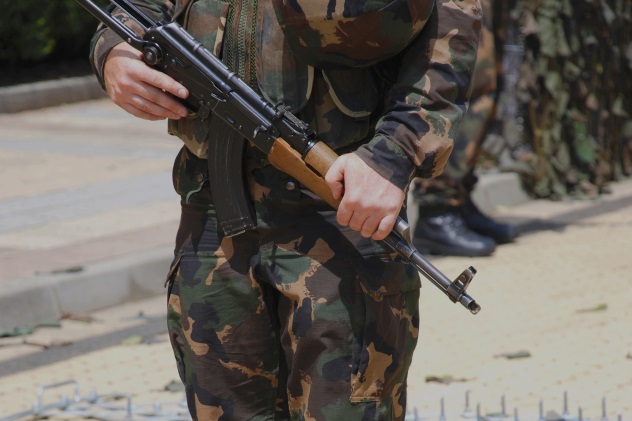
Beginning in 1943, Argentina fell under the spell of Peronism. Founded by army colonel and one-time labor minister Juan Peron, Peronism remains the guiding philosophy of Argentina’s Justicialist Party. While today, there are both left- and right-wing Peronist factions, during the first age of the movement, Peron voiced a strong populist message that embraced nationalism and promoted the interests of urban workers. As such, before being ousted in a military coup in 1955, President Peron was an incredibly popular and charismatic leader who enjoyed widespread support from both trade unionists and the lower- and upper-middle classes.
By the 1970s, however, Peronism had devolved into various squabbling factions. Making matters worse was general instability in the form of multiple coups which were rocking South America, thereby threatening Peronist power in Argentina. Right-wing Peronists tried to solve this instability by eliminating what they considered to be their internal enemies—left-wing Peronists and Marxists. In 1973, the Argentine Anti-Communist Alliance was formed in secret in order to counteract growing leftism in Argentina. During the administration of President Isabel Peron (1974–1976), the “Triple A” death squad was particularly active and worked closely with the Argentine military and police.
Before being disbanded by a military coup in 1976, the Argentine Anti-Communist Alliance is believed to have carried out anywhere between 428 and 1,000 assassinations. Later investigations in the 1980s and 1990s established that the Triple A death squad recruited its members from the army, the police forces, and the various trade unions of Argentina. On top of that, the group enjoyed healthy funding from sympathetic senators and government ministers. Even though the Argentine Anti-Communist Alliance was officially outlawed by the military junta that came to power in 1976, said junta had many of the same political enemies as Triple A and continued to use the group’s methods against its opponents.
9 Esquadrao Da Morte
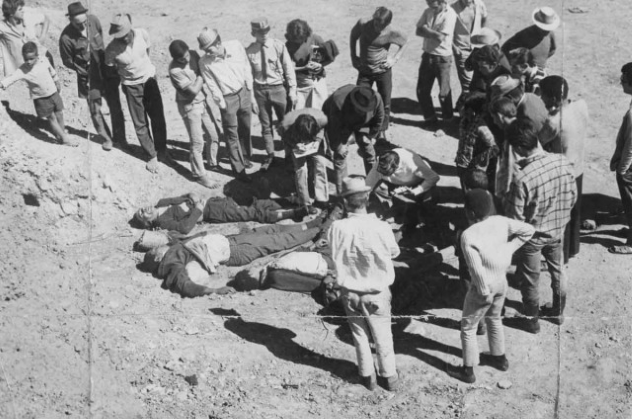
Referenced in the 1973 US film Magnum Force, the second Dirty Harry movie about a rogue death squad within the San Francisco Police Department, Brazil’s Esquadrao da Morte, or “Death Squad,” was first formed in 1964 following the successful coup that inaugurated the Brazilian military dictatorship. Until 1985, Brazil’s military government oversaw sweeping campaigns to establish order inside the country. What this often meant was that the Brazilian authorities conducted extralegal assaults and kidnappings aimed at their Marxist opponents. While Brazil enjoyed economic success under the military government, it also witnessed approximately 500 deaths and disappearances. Most of these victims were either leftists or those whom the government deemed enemies of the state.
In the late 1960s and early 1970s, the first death squads were formed in the country’s southeast in order to combat rising crime rates. Unlike later Latin American death squads, Brazil’s Esquadrao da Morte was not a single, collective organization. Several death squads existed at once and were primarily directed by professional police officers. While political opponents were sometimes targeted, Brazilian death squads in the 1970s tended to focus more on torturing and executing drug dealers, gangsters, kidnappers, and murderers.
One infamous death squad was headed by Detective Milton Le Cocq de Oliveira. Based in Rio de Janeiro, Le Cocq’s team consisted of handpicked officers who were instructed to never accept money for assassinations or to kill unarmed citizens. Despite this, Le Cocq’s group, which was noted for its bravery, became a death squad hell-bent on eradicating the many bandits that controlled Rio’s sprawling slums.
8 Thailand’s Anti-Drug Police
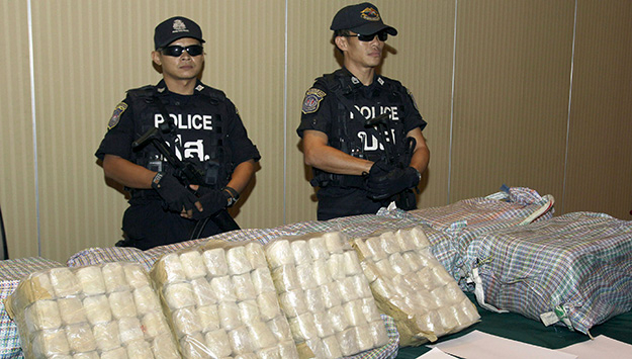
Starting in February 2003, Thai prime minister Thaksin Shinawatra began a “war on drugs” that officially targeted drug trafficking and the gangs in charge of distributing drugs all throughout Thailand. Given that Thailand has experienced an upsurge in drug use and abuse, along with salacious stories about drug dealers giving homemade methamphetamine to children, it’s not surprising that the government would pursue a hard-line policy against drugs. That being said, human rights groups across the world quickly began to criticize the campaign as an unlawful attack on Thai citizens. In particular, Human Rights Watch published a finding that claimed that in the first three months of Prime Minister Shinawatra’s campaign, 2,800 extrajudicial killings had taken place. Four years later, another study found that more than half of those killed during the drug war had no connection to drug trafficking at all.
Similar charges against the Thai “war on drugs” were argued by Amnesty International in 2003. The group asserted that a “shoot-to-kill” policy was encouraged by high-ranking officials in the Thai government, which resulted in 600 deaths in a three-week period alone. Most of these deaths were connected to Thailand’s police forces, especially those given the responsibility of cracking down on the country’s drug problem.
Ultimately, Shinawatra’s drug war concluded with the military coup of 2006. In the aftermath, the new military government decided to look into charging Prime Minister Shinawatra with various offenses, but by 2008, a new drug war was already underway in order to tackle yet another explosion in illegal drug trafficking.
7 Kenya’s Anti-Terrorism Police Unit
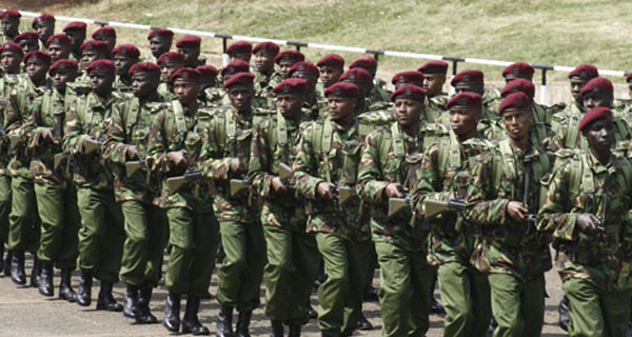
Islamic terrorism is a serious threat to Kenyan security. Owing mostly to the country’s close proximity to the failed state of Somalia, which contains several thousand fighters loyal to the Al-Shabaab terrorist organization, along with its own unassimilated population of Somali immigrants, Kenya has experienced several major terrorist attacks in the last five years. In April 2015, 147 students at Garissa University College were murdered by Al-Shabaab gunman. Two years earlier, the Kenyan city of Nairobi was the scene of a spectacularly gruesome terrorist attack inside the posh Westgate shopping mall. In all, four attackers, all of whom were ethnic Somalis and members of Al-Shabaab, murdered 67 people and wounded hundreds more. During the attack, the terrorists made a show out of sparing the lives of Muslims, which both showcased the group’s driving motivation (to kill non-Muslims) and their intention of further escalating tensions between Kenya’s Christian and Muslim populations.
Knowing this recent history, it’s not surprising that the Kenyan government would pursue an uncompromising policy toward terrorist organizations and their recruiters. However, in late 2014, Al-Jazeera, a Qatari media organization which itself has been accused of supporting Al-Qaeda, broke a story concerning Kenya’s involvement in extralegal killings. According to several police officers with links to Kenya’s Anti-Terrorism Police Unit, the group regularly received orders from Kenya’s National Security Council to kill suspected terrorists on sight. One officer admitted that he had personally killed up to 50 suspects without due process. During the broadcast, several police officers claimed that they had been trained and guided by special operators from Great Britain’s MI5 and Israel’s Mossad. While not all of these allegations have been corroborated, the story certainly embarrassed the Kenyan government at a time when it was trumpeting its own success in fighting Al-Shabaab networks inside the country.
6 CAFGU
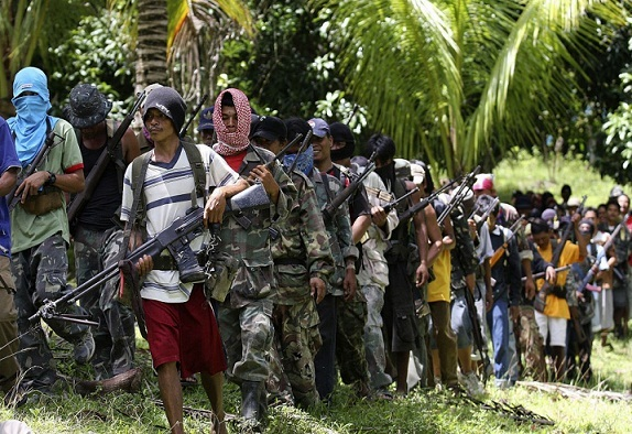
Not long after winning the presidential election in the Philippines, Rodrigo Duterte, a political populist who gained millions of fans thanks to his anti-establishment stance, made headlines by first arguing that some journalists deserved to be assassinated and then by urging the implementation of a strict anti-crime initiative that would target drug addicts themselves. While such comments would be controversial in any country, Duterte’s words had a particular resonance in the Philippines, owing to the country’s history of extralegal violence. More pointedly, Duterte’s desire to have citizens involved in his anti-drug platform conjured up in some minds the abuses of the CHDF and the CAFGU.
In the 1980s, the Civilian Home Defense Forces (CHDF) were accused of perpetrating human rights abuses during the reign of martial law in the Philippines. Although the group was dissolved by the country’s constitution of 1987, the Citizen Armed Force Geographical Unit, or CAFGU, replaced it a mere six months later as the country’s primary militia force. The group, which is still in operation today, was established as another ground force tasked with combating the country’s many anti-government militias, from criminal bandits to Communist and Islamist insurgents.
Officially, the CAFGU was created as an emergency measure. As such, it has been known to take extreme measures during its anti-insurgency operations. For the most part, the CAFGU and other government-backed militias have been accused of murdering and kidnapping suspected rebels without probable cause or proper legal procedures.
5 Grupo Colina

From 1990 until 2000, Peru was governed by Alberto Fujimori, an economist by trade and the son of Japanese immigrants. During his reign, Fujimori gained popularity for his tough stance against left-wing terrorism, which was then an acute problem in Peru. The most infamous group, known as Shinning Path, was especially deadly and was responsible for a total of 37,800 deaths during Peru’s long internal war. Like many South American strongmen before him, Fujimori combined a cult of personality and a populist message with extralegal tactics aimed at destroying the enemies of his government. Fujimori, who was brought down thanks to corruption charges, also participated in the South American tradition of creating and using death squads in order to accomplish his political goals.
One of Fujimori’s death squads was known as the Grupo Colina. Created in secret by Fujimori and composed of members taken from Peru’s military, Grupo Colina was given the task of eliminating Fujimori’s opponents on the left. Besides trade unionists and political dissidents, the group, which operated between 1990 and 1994, targeted members of Shinning Path and the like-minded Tupac Amaru organization.
The Grupo Colina is most reviled for three massacres in particular: The first occurred in 1991, when Grupo Colina gunmen targeted a party of suspected Shining Path terrorists in the Lima slum of Barrios Altos. All told, 15 people, including an eight-year-old child, were killed. It was later determined that none of the victims belonged to Shining Path. Less than a year later, Grupo Colina members killed nine peasants suspected of ties to Shining Path and abducted and murdered nine university students and one university professor after also suspecting them of ties to Shining Path. The true extent of Grupo Colina’s activities may never be known, but they were unquestionably the bloody fist of Fujimori’s dictatorship.
4 Kadyrovtsy
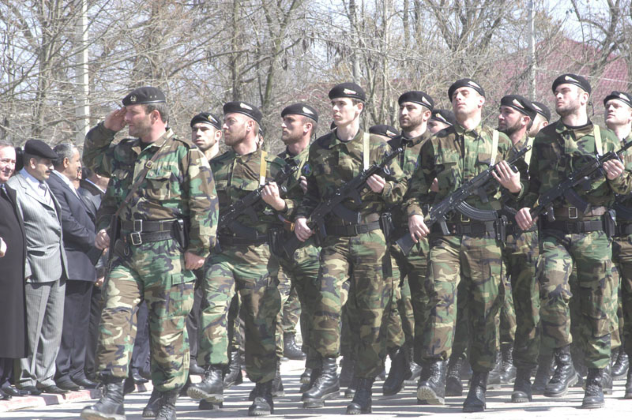
The two wars fought in Chechnya are notable for the sheer brutality committed by both sides. While the Russian military used fuel-air explosives, or vacuum bombs, to level entire cities and villages, Chechen separatists conducted several terror attacks in Russia, from the Nord-Ost siege of 2002 to the atrocity at Beslan in 2004. The Second Chechen War, which transitioned from a standard military operation into a grueling anti-insurgency campaign in 2000, was particularly nasty, thanks in large part to hundreds of battle-hardened jihadists who volunteered to fight on behalf of the Muslim Chechens. Within Chechnya itself, some former Chechen rebels did not appreciate the imposition of Saudi Wahhabism on their primarily Sufi country. One of these former rebels, Akhmad Kadyrov, organized a private militia in order to defeat native and foreign-born Chechen jihadis.
The first foe of the so-called Kadyrovtsy was the Islamist gang of Arbi Barayev, a jihadist fighter and terrorist who specialized in kidnapping. For Kadyrov, not only was Barayev’s gang a roadblock to peace with Russia, but their allegiance to a state based on sharia law conflicted with the Kadyrov family’s control of the city of Gudermes. After successfully ousting Barayev and his Arab and Dagestani allies from Gudermes, Kadyrov used his militia to reestablish his family’s control over the political life of Gudermes and much of Chechnya. In 2004, Akhmad Kadyrov was assassinated by bomb-throwing Chechen Islamists. Thereafter, leadership of the Kadyrovtsy fell to his son, Ramzan.
Today, under Ramzan, the Kadyrovtsy has become a government-backed militia dedicated to fighting both Islamist insurgents and the enemies of Moscow. Chechen fighters loyal to President Kadyrov have fought in Georgia and Ukraine, thereby making themselves some of the more capable and experienced fighters in Russia’s large ground force. The size of the Kadyrovtsy has been placed at around 4,000 men, with the core being composed of members of Kadyrov’s extended family. The Russian Ministry of Internal Affairs legalized the group sometime after 2002, and since then, human rights organizations have routinely accused the Kadyrovtsy of extrajudicial killings and other abuses done in the name of counterterrorism.
3 Battalion 3-16
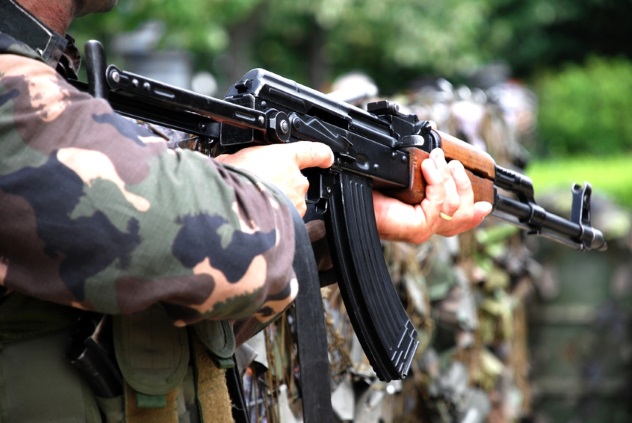
When it was first born, Battalion 3-16 was an organization funded and trained by the CIA and FBI. The group’s original purpose was to gather and provide intelligence to US observers deployed to Honduras during the country’s protracted civil war. However, during the 1980s, Battalion 3-16, whose members came from the army and other branches of the Honduran armed forces, became a death squad that allegedly kidnapped and murdered almost 200 Sandinista guerrillas and political foes.
According to former Battalion 3-16 member Florencio Caballero, after the group received its initial training in the Southwestern US, 25 of them returned to Honduras in order to receive even more training. This time, their American instructors were joined by Argentine counterparts. The Argentine instructors schooled Battalion 3-16 members in the methods used by the Argentine death squads during their own counterinsurgency campaigns. Consequently, Battalion 3-16 units conducted targeted abductions that usually involved untraceable cars and secret detention facilities that would be used for torture and summary executions.
The actions of Battalion 3-16 were not publicly condemned until the 1990s, when Honduran prosecutors asserted that over 100 army officers had taken part in their extralegal assaults. Battalion 3-16 was singled out for being responsible for the worst abuses of the civil war. Furthermore, it was argued that most of the victims in the country’s 26 secret cemeteries had been killed by the infamous death squad.
2 The Iron Guard
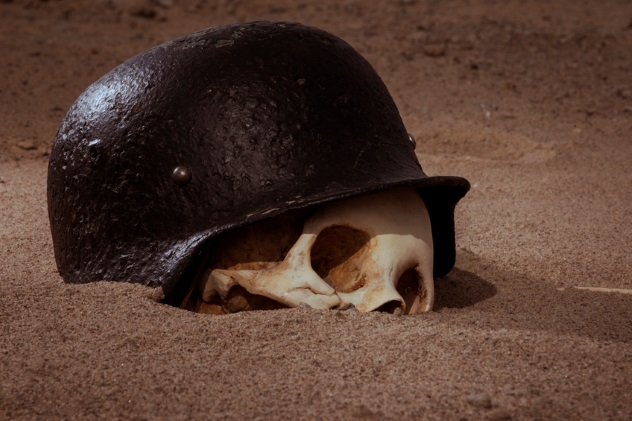
From the 1930s to the 1950s, King Farouk of Egypt maintained royal power through a private corps of assassins that he called the Iron Guard. During World War II, when Egypt witnessed several battles between British and Italo-German forces, the Iron Guard was mobilized in support of the Axis cause while at the same time offering their services to Egyptians loyal to the Marxist ideology of Leon Trotsky. When 12 members of the group were tried in separate court martial trials in October 1952, the Egyptian public learned that besides carrying out political killings orchestrated by King Farouk himself, members of the group also oversaw large hashish smuggling networks.
In truth, despite all of the Iron Guard’s devious actions, their main concern was undermining the Wafd Party, King Farouk’s chief rival for political power inside of Egypt. To this end, the Iron Guard conducted several anti-Wafd assassinations, most of which did not become public knowledge until much later. Similarly, the Iron Guard was clandestinely supported by another secret organization, the Free Officer Movement. Anwar Sadat, a Free Officer, former revolutionary committed to starting a Nazi invasion of Egypt, and the future president of Egypt, joined the Iron Guard after fleeing the Arab-Israeli war in 1948.
1 Internal Security Unit
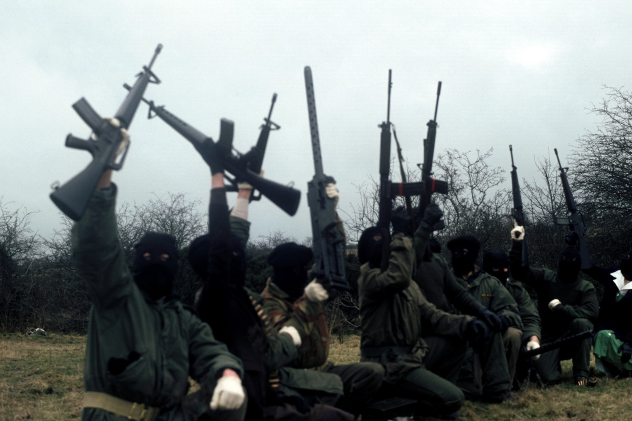
Before being thoroughly infiltrated by British secret agents, the Irish Republican Army’s Internal Security Unit was a feared organization tasked with insuring the IRA’s well-being. What this meant in reality was that the Internal Security Unit was obsessed with sussing out moles and British spies. They became known as the “Nutting Squad” by IRA foot soldiers because after they found and tortured a suspect spy, they would “nut” him by shooting him twice in the head.
The group began in 1972 after Gerry Adams, now the leader of Ireland’s Sinn Fein political party, decided to organize various IRA cells into a central body tasked with producing counterintelligence. The group’s other central mission was the liquidation of both real and potential informants. Unfortunately for the Internal Security Unit and the IRA itself, later documents have revealed that nearly half of all senior officials in the IRA worked for British intelligence at one point or another.
The story of Alfredo “Scap” Scappaticci further highlights the close working relationship between certain segments of the IRA and British intelligence services: While working for the Nutting Squad in the 1980s, Scap supposedly murdered around 50 men. At the same time, under the alias of “Stakeknife,” Scap provided intelligence to British army units stationed in Northern Ireland. The British government paid him £80,000 a year despite knowing that Scappaticci was a murderer and possibly responsible for the deaths of pro-British militia fighters, police officers, and Northern Irish civilians.
Benjamin Welton is a freelance writer based in Boston. His work has appeared in The Weekly Standard, The Atlantic, Listverse, Metal Injection, and other publications. He currently blogs at literarytrebuchet.blogspot.com.
